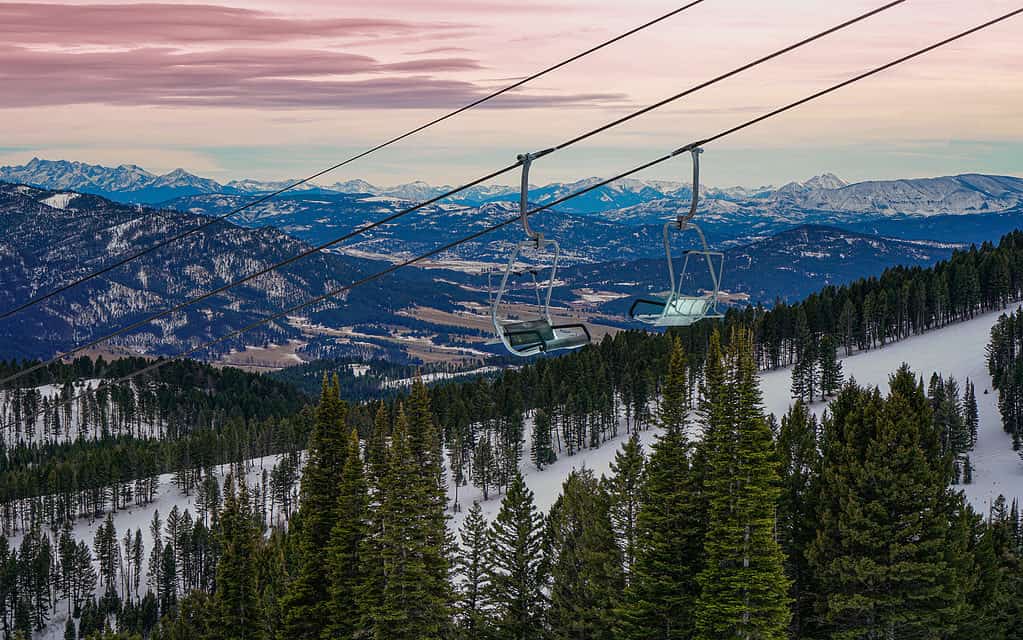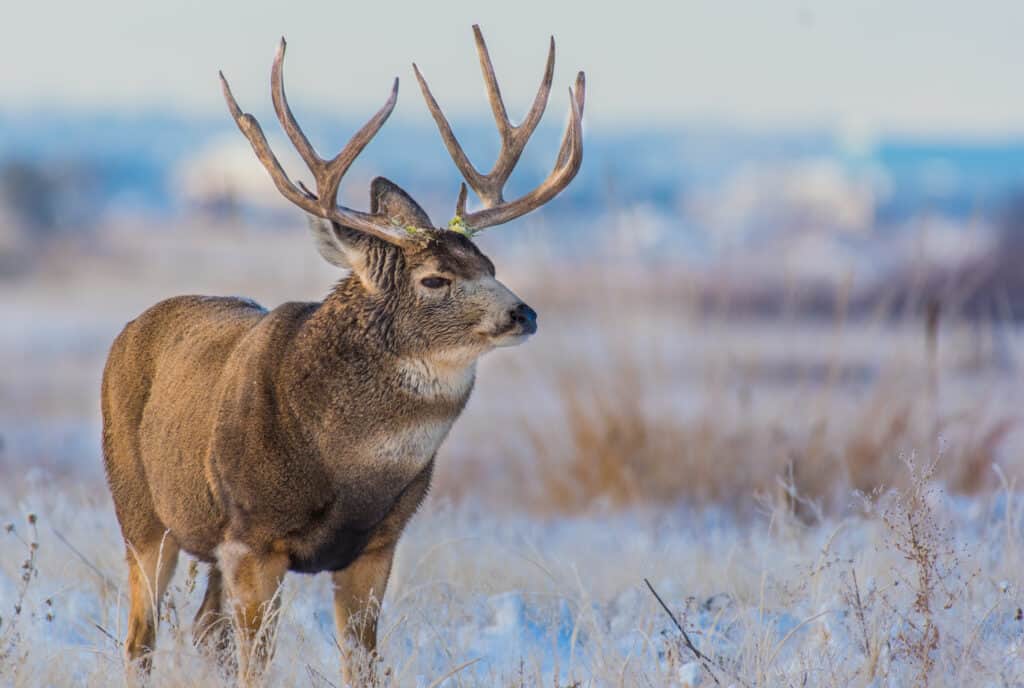Montana is where the cattle are bountiful, and people are scarce. Along with cattle, this state is also home to many wildlife, including bison, elk, golden eagles, and grizzlies. It’s a landlocked environment, bordered by three Canadian provinces and four states, including Wyoming, South Dakota, North Dakota, and Idaho. Often referred to as “Big Sky Country,” Montana also holds a world record for experiencing the highest temperature shift within 24 hours. It was 1972 in Loma when the temperature spiked from a frigid -54 °F all the way up to 49 °F. Although that first reading is bone-chilling enough, it’s not even close to Montana’s coldest winter ever recorded in state history.
The Coldest Winter Ever Recorded in Montana History

Winter can be brutal in Montana.
©Morseofphoto/Shutterstock.com
Montana’s winters aren’t for the unadventurous. This state frequently experiences below-zero temperatures during its winter months, which lasts about 3.4 months on average. The temperature plummets, with winds gusting up to 124 miles per hour, tearing roofs off homes, downing power lines, and even blowing empty railroad cars over.
This all occurred in January of 1989 when a disastrous weather event powered through the state shortly after a week-long trick nature played. The weather was warmer and felt like spring, but Montana was quickly reminded that January means winter. The Northern Rockies experienced an extreme arctic air mass that sent chilling wind gusts to Shelby, Browning, and Choteau. In Helena of this same year, temperatures dipped to -33 °F, and wind chills made it feel more like -75 °F.
There are plenty of stories about the unapologetic, unrelenting winters Montana experiences, yet one winter earned Montana the national record for the coldest day. It was January 20, 1954, near Helena when an unimaginable -70 °F temperature was recorded at a mining camp. The week prior brought continuous snowfall, with the ‘highs’ that week reaching an almost laughable -18 °F. Snow mounted up to 66 inches around this time, and the night was completely — almost eerily — clear, creating a perfect environment for intense cooling.
Though Montana earned the new national record in 1954, its only competition was itself. Back on February 9, 1933, Montana set the national record for the coldest day near West Yellowstone. That day, temperatures dipped to -66 °F. Climatologists predict the next record will be set in a similar environment, a high mountain valley. Although temperatures that dip into -40 °F are part of life in Montana, it’s been many years since they’ve made it past -50 °F.
Average Highs and Lows This Year

While the state sees dramatic highs and lows, 2022 might mark the coldest winter ever in Montana.
©Jason Maehl/Shutterstock.com
On December 22, 2022, winter storm Elliott made its way through Montana and Wyoming, leaving a foot of snow and chaotic travel conditions in its wake. A daily record low was set in Bozeman when temperatures plunged to -42 °F. A daily record tie was reached in Helena when temperatures dropped to -35 °F. Wind chill warnings reverberated out to Montanans as Malta experienced wind chills of -72 °F.
On average, however, temperatures range between 0 °F and 40 °F. In January, temperatures warmed up a bit, with averages between 10 °F and 40 °F. However, on January 29th, temperatures dipped to -20 °F before quickly rising back up to 20 °F, consistent with Montana’s unpredictability.
Animal Migration in Montana

Mule deer are among the Montana animals that stick around all year.
©iStock.com/Kerry Hargrove
Despite the merciless weather winter brings in Montana, some resident animals stick it out year-round. Mule deer, for example, spend the entire year occupying the same two square miles in the Powder River area in the state’s southeastern region. Although resident animals typically remain in low-elevation areas, bighorn sheep are an exception. These animals call high-elevation ranges of over 10,000 feet home throughout the year.
Nearly all of the bald eagles in Montana remain in the state throughout the year, though they travel a bit, drawn in by various food sources. So long as waterfowl have access to food and open water, they also remain within the state.
Pronghorns are hoofed animals whose population was cut by 70% in the winter between 2010 and 2011 when conditions were severe. In Montana, pronghorns migrate following riparian areas, railroads, and even country roads to successfully make it across heavy snow.
When spring rolls around, elk migrate from Montana and other states over to higher elevations in the core of Yellowstone National Park. When November comes and the temperatures start dropping, elk migrate from those higher elevations down into open valleys and foothills. As snow accumulates, their ability to forage is thwarted, so they move with urgency.
During fall and spring, migrant raptors like golden eagles create what’s known as the “eagle highway,” which runs adjacent to the Rocky Mountain front. Golden eagles are incredible in their ability to withstand Alaskan extremes and make their way over to Mexico. Though many species remain within the state, raptors that migrate south for the winter include Swainson’s hawks and osprey.
The photo featured at the top of this post is © jfisher2167 / CC BY 2.0 – License / Original
Thank you for reading! Have some feedback for us? Contact the AZ Animals editorial team.






